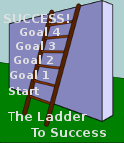The Fifth Weight Loss Basic:
Why You Need A Plan
In this third article: Understanding Weight Loss Basics – 3, we will look at the fifth weight loss basic you need to understand: Why You Need A Plan. You should, by now, have already read Understanding Weight Loss Basics: Introduction, and completed the Three Basics, in Article 1 and Why You Need A Reason To Lose Weight, in Article 2.
understanding weight loss basics – 3:
Planning Your Route To Success
Every major decision you make needs a plan whether it be planning a family holiday, a wedding, a retirement or any other major decision you make.
family holiday, a wedding, a retirement or any other major decision you make.
Without a plan you will probably fall short of your intended goals and losing weight is no different. Someone once said: “That failing to plan is planning to fail”.
Planning for the long term is the safe and healthy way to permanent weight loss. Resorting to crash, starvation or fad diets may work in the short term but certainly aren’t conducive to long-term weight loss.
In all probability, when you reach whatever weight you want to be you will dispense with them and start piling the pounds back on, leading to a sense of failure, and frustration at maybe having spent a considerable sum of money only to be back to square one.
understanding weight loss basics – 3: Creating Your Plan
How do you create a realistic weight loss plan? I would suggest, that before anything else, you decide what weight you want to be.
Do you want to weigh the correct weight for your height, age and sex or just drop a couple of sizes so you can wear more fashionable clothes?
Once you have decided whatever weight you want to be the next thing to consider is how to reach your targeted weight.
Setting a goal and a time scale in which to reach that goal is the next step in creating your weight loss plan. Be realistic when setting your goal, setting an unrealistic target for the amount of weight you want to lose and the time you set yourself to lose it, is doomed to failure as when you fail to reach your set goals you will probably lapse back into your old lifestyle.
Trying to lose ten pounds in ten days is not only unrealistic it is also decidedly unhealthy. As any doctor or dietician will tell you, unless for medical reasons and under supervision, a weekly weight loss of one to two pounds is the healthy way to lose weight, although this may differ with each individual.
 You don’t have to reach your targeted weight in one; you may find it easier to break it up into smaller goals, setting a target weight and timescale for each one until you reach your ultimate goal, a sort of ladder to success!
You don’t have to reach your targeted weight in one; you may find it easier to break it up into smaller goals, setting a target weight and timescale for each one until you reach your ultimate goal, a sort of ladder to success!
As previously stated, putting yourself on a starvation diet in an attempt to reach unrealistic targets will probably result in frustration, leading to a sense of failure, and is not conducive to long term healthy weight loss.
As the illustration suggests, you could have four goals with a targeted weight and timescale for each one. As an example, you could make each goal thirteen weeks which would give you a final target of one year in which to reach your desired weight.
Imagine, even losing an average of one pound per week over a thirteen week period would result in a weight loss of nearly one stone (14lbs). That’s three stone ten pounds (52lbs) over twelve months! And that’s only losing an average of one pound per week.
You make think a year is too long a period but, as I have stated previously, successful healthy long term weight loss is a marathon not a sprint. Slow but sure is the way to go. Remember the story about the hare and the tortoise?
